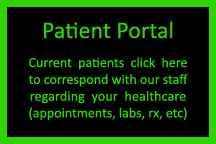Armour Thyroid Supplementation
The thyroid gland governs the body’s metabolism and development through the production of thyroid hormones. These hormones enable our cells to produce and utilize energy, also known as our metabolic rate. If your thyroid gland was removed and you were not given supplemental thyroid, you might live one year. You would unwind like a toy soldier on Christmas morning and your body would go to room temperature.
The thyroid gland is shaped like a butterfly and is located on the front of the neck in front of the trachea, which is commonly known as the “Adam’s Apple.” The thyroid gland produces two hormones: thyroxine (T4), the iinactive prohormone and tri-iodothyronine (T3), the active intracellular hormone. Thyroxine (T4) is produced twenty (20) times more than T3. In the cells of the body, T4 must be converted to the active thyroid hormone T3.
The thyroid hormones are secreted into the blood and carried to each of the 100 trillion cells in our body. It is in the cells, not in the bloodstream, that the thyroid hormones accomplish their purpose. In the blood, 99.95% of the thyroid hormones are bound to proteins, primarily thyroid binding globulin (TBG). When bound to protein, the thyroid hormone is inactive and cannot be utilized by the cells of the body. Only 0.05%, that is 5 parts in 10,000, of the thyroid hormones remain unbound in the bloodstream. This is known as the free thyroid fraction (Free T4). Only the unbound, free thyroid can be assimilated into the cells of the body and be converted to T3.
The thyroid hormones are essential for normal growth and development in children. The thyroid hormones promote growth hormone secretion and independently promote growth in the peripheral tissues of the body. Insufficient thyroid hormone leads to growth failure by delaying bone growth and bone maturation.
In the cells, the thyroid hormones facilitate and catalyze the production of energy. This energy is needed to drive all the biochemical reactions that are necessary for life.
The source of all energy in our body is ultimately derived from the sun. As plants absorb sunlight they use that solar energy to grow and that energy is stored in the molecules of plant cells. As we eat plants, or eat animals that have eaten plants, our body digests these substances into food molecules, which are absorbed into the bloodstream and subsequently enter the cells.
Most of the food we eat is broken down into a sugar molecule called glucose. The molecular bonds in the glucose molecule contain energy. In order for our cells to extract the energy from the glucose molecule, a series of biochemical reactions must occur. The oxygen we breathe percolates through the bloodstream and enters the cells. Oxygen mixes with glucose through a series of biochemical reactions called glycolysis and the Krebs cycle. Energy is then extracted from the glucose molecule and transferred to the energy molecule of the cell, known as adenosine triphosphate (ATP). The thyroid hormones catalyze and facilitate this energy transfer reaction, which is formally known as oxidative phosphorylation.
If you were to take a trip to Europe next week, you would have to exchange your American dollar bills (which have value) for the Euro dollar, the currency in Europe. In the cells, we transfer the energy value contained in the food molecules to ATP, the energy currency of the cell.
The ATP energy molecule is transported to the areas of the cell where biochemical reactions occur. It is these biochemical reactions in the cell that produce proteins, hormones and other substances essential for life. The energy in the ATP molecule is then released in order to drive these biochemical reactions and the excess energy is converted to heat. Thus, the thyroid is also the thermo-regulator of our body’s temperature.
Allow me to give you an illustration to help you better understand the function of the thyroid hormones. When you take your car to a filling station, you place gasoline in the gas tank. How does gasoline supply energy so that our cars will run? If you put gasoline in your hand, it is cold and it will evaporate. Gasoline is the refined product of oil and contains a series of high-energy carbon bonds. In order to extract energy from the gasoline, the gasoline must be transmitted through the fuel line into the combustion chamber of the engine. The combustion chamber contains a sparkplug which gives off a spark. This spark causes combustion of the gasoline, which causes a rupturing of the carbon bonds and a releasing of energy that drives the pistons and allows the car to run. The excess energy is expelled through the tailpipe as heat. In our bodies, the thyroid hormone is the spark plug of the cell.
Let us say that you have an eight-cylinder car, but only six sparkplugs are working. Your car will run, but it will run rough and not optimally. In the same way, if our cells do not assimilate enough thyroid hormone, then energy contained in the food molecules will not be efficiently converted to the energy molecule of the cell, ATP. This results in decreased energy production and a lower metabolic rate in our bodies.


